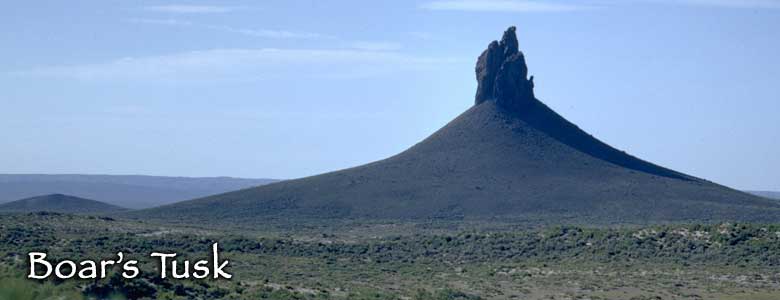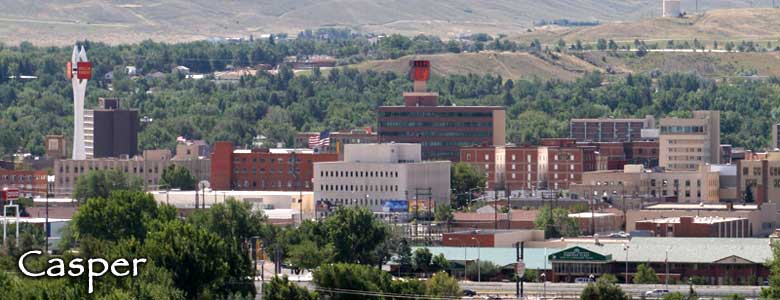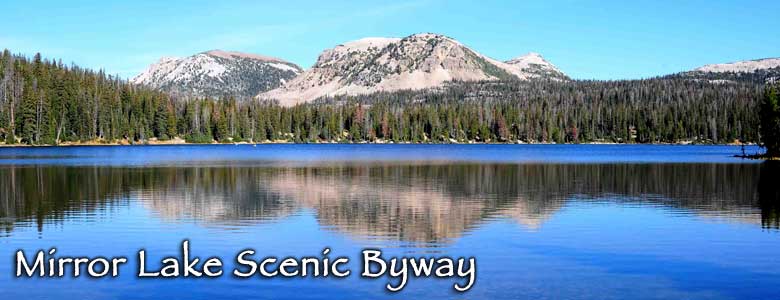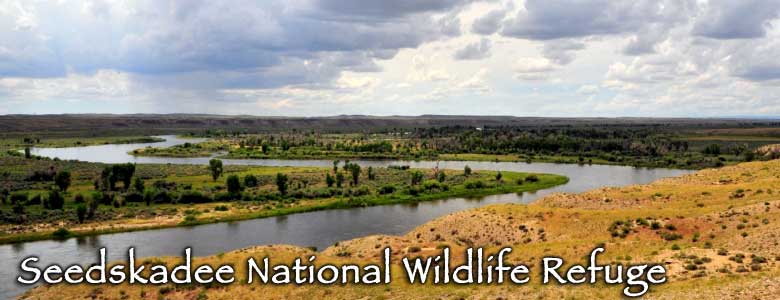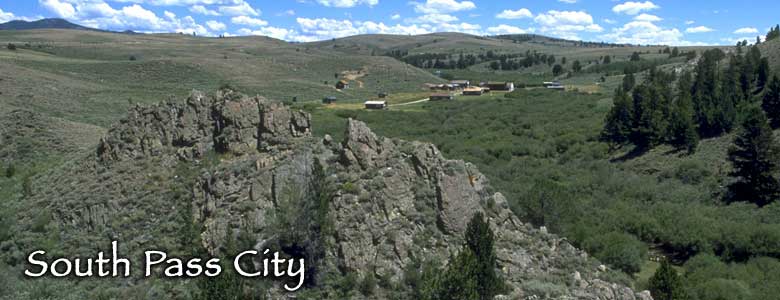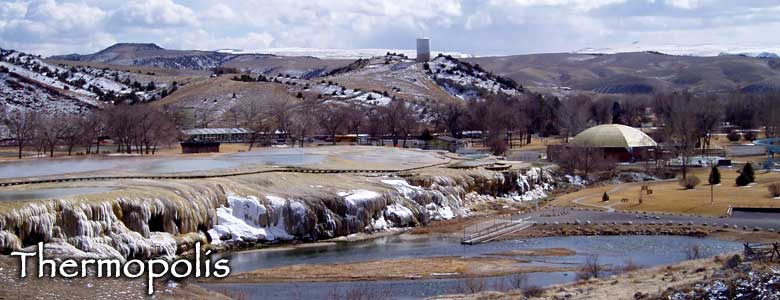
Wyoming Information, Photos and Maps
A Vacation Planner and Travel Guide Full of Area Information
Wyoming was first organized as Wyoming Territory in 1869. The first Territorial Legislature passed a bill granting women of the territory equal political rights. In March, 1870, the first women in the world to serve on a jury were 5 women from Laramie. In September of 1870, Laramie held a public election and the first woman to cast a legal vote in the United States was a resident of Laramie. Wyoming and Texas were the first states to elect women governors, Nellie Tayloe Ross assuming office in Cheyenne a few days (January 5, 1925) before the new Texas governor was seated (January 20, 1925).
Wyoming has no personal or corporate state income tax, financing most governmental activities through the income derived from mineral, coal and oil-and-gas severance taxes and property taxes. There is a state sales tax (4%) and each county has the option of adding another 2% to that for local needs. Most counties have a lodging tax (2% to 5%) and the state collects a 5% use tax on goods bought elsewhere and transported into Wyoming. Personal property held for personal use, is tax-exempt. Wyoming also has no inheritance tax but there is an estate tax that is related to the federal estate tax imposed by Congress. The Tax Foundation rated Wyoming as having the single most "business friendly" tax climate in the United States in 2008. At this time when so many states are looking at legalizing gambling as a means of raising state revenues, there are only two Wyoming Casinos, both on the Wind River Reservation in the western part of the state. The state is not considering adding more to the roster.
The northeastern one-third of Wyoming is High Plains country, suited for livestock grazing, the large-scale growing of grains and the open-pit mining of coal (some of the largest coal mines on Earth are located in the Powder River Basin of Campbell County). The other two-thirds of the state is covered with rugged mountain ranges and dry rangelands. In the south-center of the state is the Great Divide Basin, an area between forks in the Continental Divide where waters that precipitate there stay there: water can't flow out so it either evaporates or sinks into the ground.
About 48% of Wyoming is owned by the Federal Government, managed by the Bureau of Land Management, National Forest Service, National Park Service, US Fish and Wildlife Service and the US Air Force (FE Warren Air Force Base near Cheyenne). Wyoming is also criss-crossed by several National Historic Trails, including the Oregon Trail, California Trail, Mormon Pioneer Trail and Pony Express Trail. About 6% of Wyoming is owned by the state government.
Most precipitation in Wyoming occurs in the mountainous areas and many of the larger Western rivers (the Snake, Green, Yellowstone, Wind, Big Horn and North Platte Rivers) find their sources in Wyoming's mountains . The northeastern third of the state is rated as semi-arid, receiving on average 10-12 inches of precipitation per year. The Big Horn Basin (west of the Big Horn Mountains and east of the Wind River and Absaroka Ranges) is rated as true desert, receiving an average of eight inches of precipitation per year. Wyoming does experience tornadoes but that activity is confined to the southeastern part of the state and the few tornadoes that do form have significantly shorter lifetimes than those that form further to the east.
Wyoming only had one gold strike (near South Pass City in 1867) and that was very short-lived. So there was never that spike in population growth. Instead, the state didn't really begin to develop until the Transcontinental Railroad arrived in Cheyenne in 1867. That fueled the growth of large cattle operations on the free range offered by the plains of eastern Wyoming. The railroad also precipitated the arrival of smaller ranchers and farmers, coming to take advantage of the Homestead Act of 1862. The raising of fences on small acreages brought about the Johnson County War and other abuses of the less-politically-connected in the early days of Wyoming's statehood.
Today, Wyoming is the least populous of the fifty states, and the 49th least densely populated (Alaska's population is greater but less concentrated in that huge landscape). The largest city is Cheyenne with almost 60,000 residents within the city limits.
In 2010, Wyoming contracted with Google to move a large part of the state's information infrastructure onto Google's cloud. As of late 2011, about 10,000 state employess were seamlessly integrated with Google Apps, Gmail and Google Sites, making Wyoming the first state to go fully "Internet Cloud."
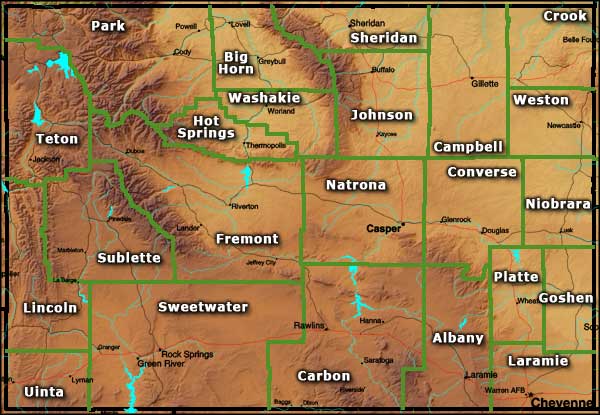
You can click on the county names on the map above, or use the list below. Each county page has some population statistics and a zoomable/pannable map centered on that county.
| Albany County Big Horn County Campbell County Carbon County Converse County Crook County Fremont County Goshen County |
Hot Springs County Johnson County Laramie County Lincoln County Natrona County Niobrara County Park County Platte County |
Sheridan County Sublette County Sweetwater County Teton County Uinta County Washakie County Weston County |
|
Wyoming Towns & Places |
||
|
NOTE: On many of the pages linked below I try to provide some demographic information. As this information comes from the US Census Bureau, there are a couple of caveats that have to be taken into consideration:
|
||
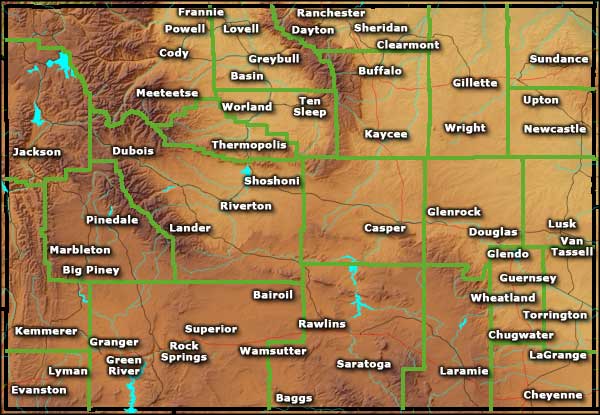 |
||
|
You have two options here: you can click on a name on the map above and be taken to that page, or you can use the list below and get to the same place (and there's more names in the list below than on the map above: |
||
| Afton Albin Alpine Baggs Bairoil Bar Nunn Basin Big Piney Buffalo Burlington Burns Byron Casper Cheyenne Chugwater Clearmont Cody Cokeville Cowley Dayton Deaver Diamondville Dixon Douglas Dubois East Thermopolis Edgerton Elk Mountain Evanston Evansville Fort Laramie Frannie Gillette |
Glendo Glenrock Grand Encampment Granger Green River Greybull Guernsey Hanna Hartville Hudson Hulett Jackson Kaycee Kemmerer Kirby La Barge LaGrange Lander Laramie Lingle Lost Springs Lovell Lusk Lyman Manderson Manville Marbleton Medicine Bow Meeteetse Midwest Mills Moorcroft Mountain View |
Newcastle Opal Pavillion Pine Bluffs Pine Haven Pinedale Powell Ranchester Rawlins Riverside Riverton Rock River Rock Springs Rolling Hills Saratoga Sheridan Shoshoni Sinclair Star Valley Ranch Sundance Superior Ten Sleep Thayne Thermopolis Torrington Upton Van Tassell Wamsutter Wheatland Worland Wright Yoder |

